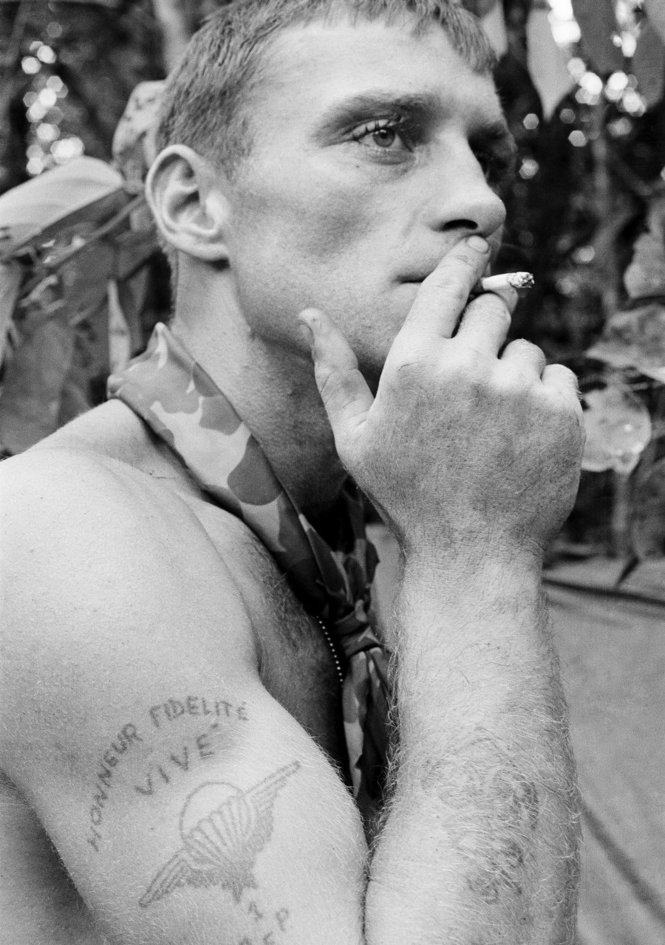
US Army Ruediger Richter, with “1er Régiment Etranger de Parachutistes” tattoo, Vietnam 1966. Photo AP Henri Huet.
Mister Freedom® “CAMO CHUTE SCARF”
June 2014 Edition
On a chilly day of December 1783, French physicist Louis-Sébastien Lenormand figures it would be good idea to challenge gravity by jumping from the 150 feet-tall Babote Tower in Montpellier. Ever the prudent, he is holding what is basically a large umbrella. Betting galore in the assistance. Sacré bleu…
He renames it PARA (against, in Greek) CHUTE (fall, in French), on his way home.
On August 16th 1940, Bill Ryder feels a firm slap on his thigh.
He then instinctively proceeds to jump out of a Douglas C-33, flying 1500 feet above Georgia.
1LT William Thomas “Bill” Ryder had just made the first paratroop jump in the history of the US Military.
On the same sortie, Pvt. William N. “Red” King moves into position, slap… GO! GO! GO!
Red King had become the first American enlisted man to jump out of a flying airplane.
The 48 volunteers of that “U.S. Army Parachute Test Platoon” paved the road for the future paratroopers of the five Airborne Divisions of the US Army.
WW2 was just around the corner, and a mustachioed psychopath had great plans for them.
Exiting a flying machine rigged to 65 lbs bundle of white silk fabric, in the dark, over unknown swampy territories, weighted down with some 100 lbs of gear, with angry people shooting at you, will appear to most like a questionable career move. “You fly to work” they said…
But men stepped up to the plate when it counted, and Operation Neptune scattered just enough of these jumpwing-pinned daredevils on the Normandy countryside to get the Kommandantur totally confused on where exactly the invasion was happening. Confused enough to miscalculate the necessary reinforcements needed to block the beachheads.
If it weren’t for the courage of those who bet the pot on that morning of June 6, 1944, and the loooong days ahead, the French would probably be speaking German today, as the saying goes.
It is usually perceived that paratroopers are quite proud of their legacy, training and accomplishments. Some consider themselves above the ‘legs‘ (non-paratroop infantry). They like to stand out in crowds, and won’t mind ruffling brass feathers from time to time. The men of the Filthy Thirteen took this next-level on D-1…
Once airborne, a paratrooper’s best friend is the piece of fabric above his head, hopefully carefully inspected, repaired and folded by the expert riggers. For US paratroopers, it was common practice during WW2 to cut off a piece of the T-5 parachute with your trench knife after your first combat jump. The shredded piece of spot camo fabric would then be used as an ascot to show others you had seen action. This also rendered the canopy un-usable by the enemy, prevented neck rashes from the M37 wool shirts…
As the war progressed, scattered DZ would provide ample camouflage parachute material for troops to use as helmet covers as well.
The fancy neckwear practice also spread to Special Forces units, its popularity extending to the Vietnam conflict.
Now, back on the safe and peaceful shores of sunny California.
The original US Army canopy we used to cut out our “CAMO CHUTE SCARF” from, came out of the dusty storage room of an old Army-Navy store…
I originally thought the fabric was silk but that canopy actually proved to be nylon (a burn-test produced a celery-like smell).
It is of the smooth nylon type (1rst pattern), not the 2nd pattern rip-stop camouflage parachute.
Because incomplete when found (missing sections, chopped suspension lines) there were no markings left to ID it precisely. Later on, when deciding on the stamp for the MF® scarf, I would arbitrarily settle on 1954, as all this happened back in early May 2014, a date marking the 60 years of the fall of Dien Bien Phu.
Not an expert on chutes but it seems nylon replaced silk in parachute production sometime between 1941 and 1943. Camouflage chutes in the U.S. Army were discontinued in the late 1950’s.
Although the canopy is 100% authentic, by respect for the story behind legit paratroopers jump scarves we decided not to make a replica of an original with shredded edges.
Instead we have adapted it a bit, overlocked the edges, added a (faint) blue ink stamp reminiscent of the original chute marking, and the “Sportsman” Made in USA label. They are still rough though, and are no Hermès square.
Each scarf is unique in shape and size, as we respected the original panel shape. We also left the original splicing of sections (the white stitching flat felled seams).
Again, none of the scarves are perfect rectangles and size/ shape vary.
To really geek-out, the original nylon fabric is selvedge, with green ID, as revealed when we opened one of the seams of a torn panel.
And that, my friends, is the short story behind the MF® CAMO CHUTE SCARF!
This vintage scarf was re-purposed in California by Mister Freedom®. Limited edition.
SPECS:
FABRIC:
Original vintage U.S. Army T-5 type parachute canopy, 100% smooth nylon, silky touch. Beige/olive/green Spot camouflage.
DETAILS:
* Inspired by a US Airborne WW2 paratrooper tradition.
* Overlocked edges
* Soft hand, silk-like.
* Scarf may include original flat-felled seam panel splicing
* Original MF® ink stamp.
* Sportsman label
* Re-purposed in the USA
* Limited edition.
WASHING:
The scarves have been laundered.
Hand wash with mild detergent. Line dry.
Available washed, one size
Retail $129.95
Call the store at 323-653-2014 or email sales@misterfreedom.com with questions.
Soon available on www.misterfreedom.com
Thank you for your support.
Credits:
* Photo of Captain Roger Donlon courtesy of Peter McQueen ©Stars and Stripes
* Photo of Jake McNiece courtesy of Johan Romin.
* Some historical references collected from comments and photos of members of www.usmilitariaforum.com/forums/ , kind enough to make their knowledge public.
This post is dedicated to “Tonton Jean-Claude“, my Uncle, photographed here sometime in 1957 in the Djebel Grouz (border of Algeria and Morocco), during his 2LT days in the 14e RCP (Régiment de Chasseurs Parachutistes), 1ère Section.
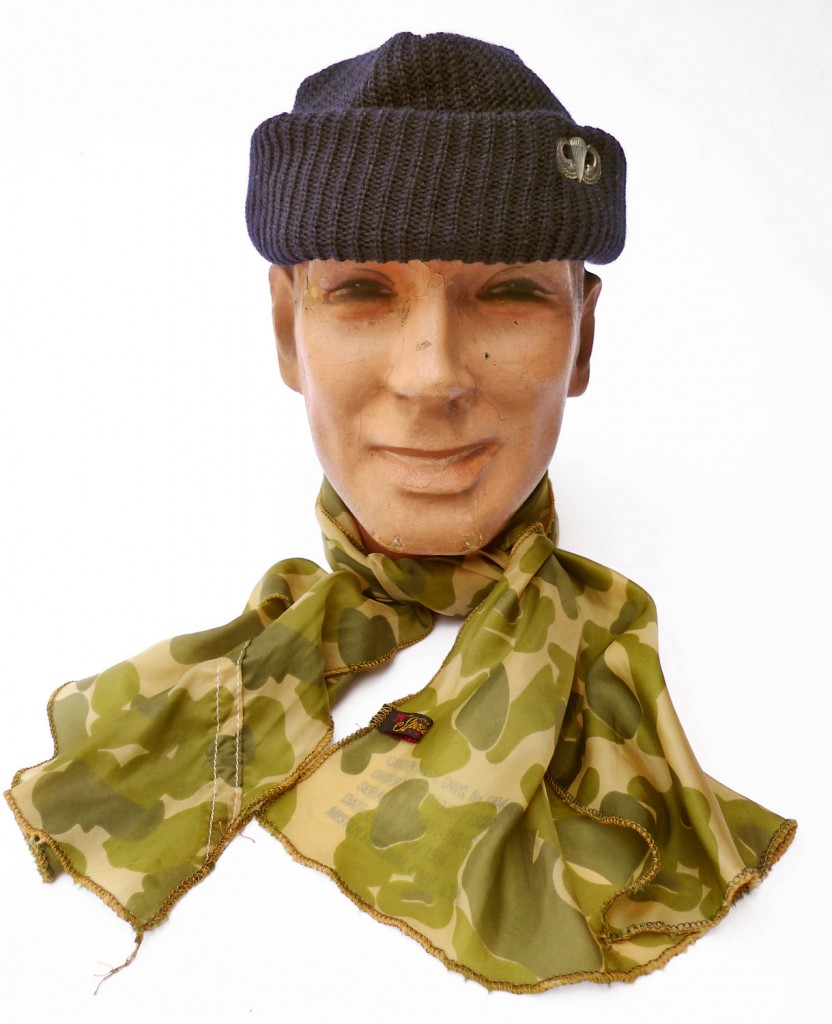
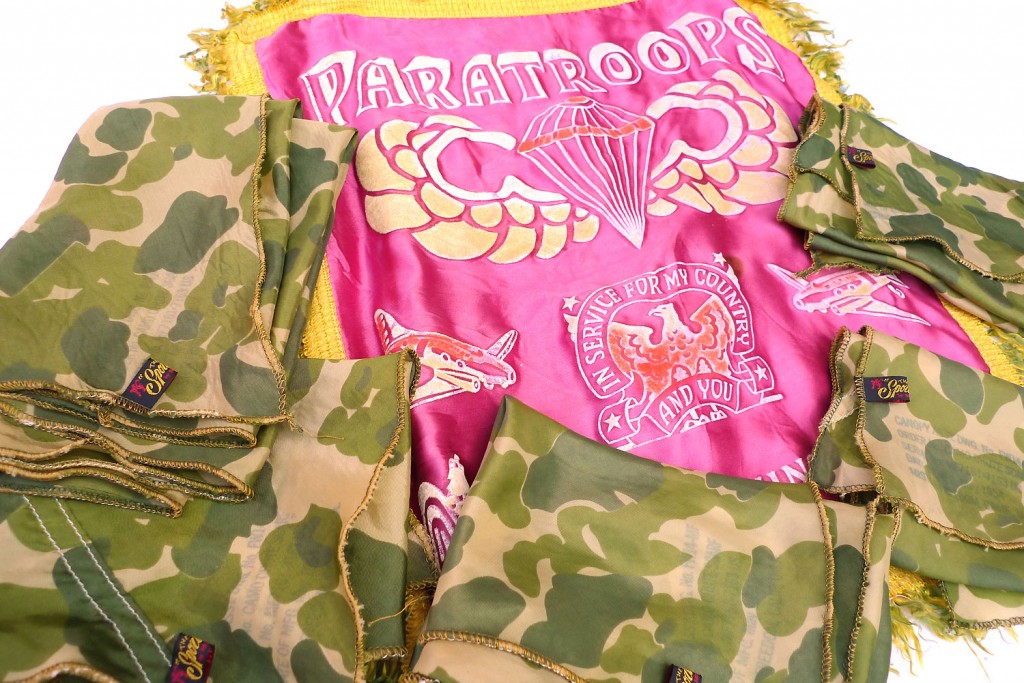
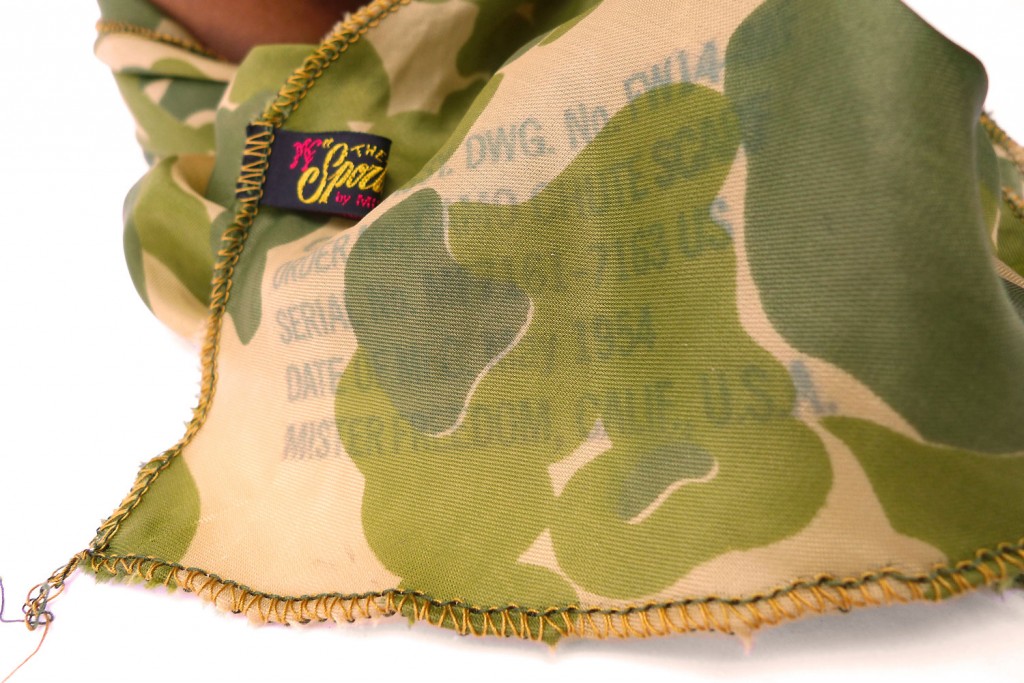
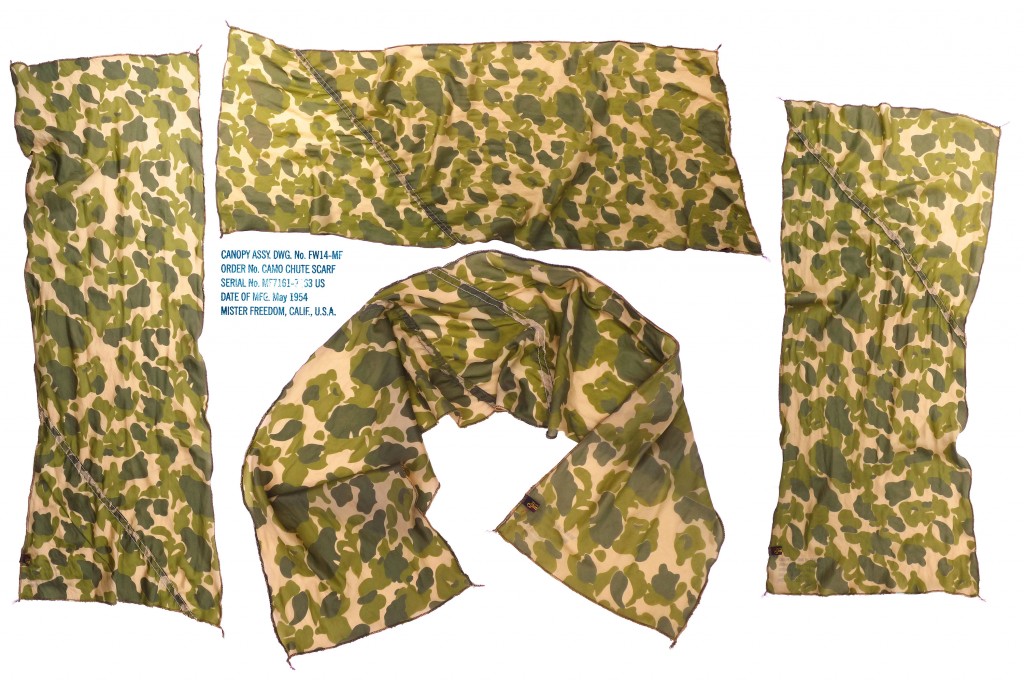

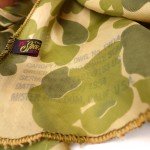
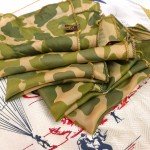
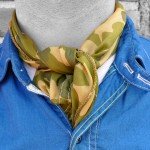


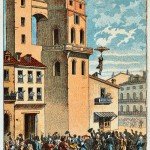
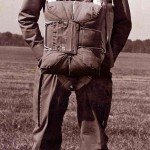
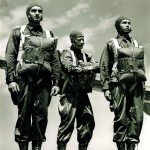
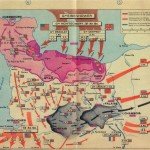
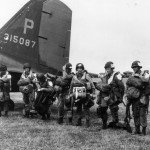
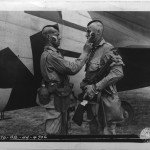
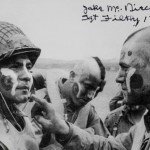
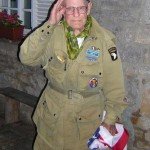
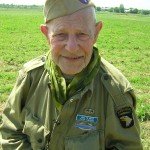
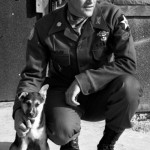
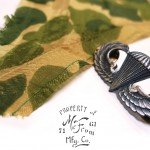
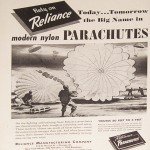
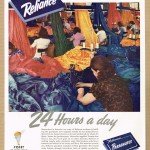
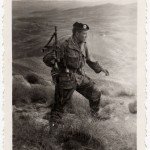
Leave a Reply
You must be logged in to post a comment.